Ensatina eschscholtzii
—
Ensatina
Subspecies I've seen:

E. e. croceater
Yellow-blotched Ensatina
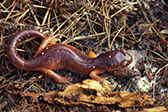
E. e. eschscholtzii
Monterey Ensatina
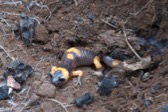
E. e. klauberi
Large-blotched Ensatina
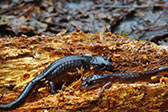
E. e. oregonensis
Oregon Ensatina
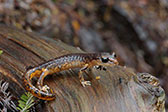
E. e. picta
Painted Ensatina
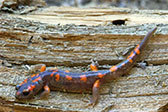
E. e. platensis
Sierra Nevada Ensatina

E. e. xanthoptica
Yellow-eyed Ensatina
Ensatina eschscholtzii croceater
—
Yellow-blotched Ensatina
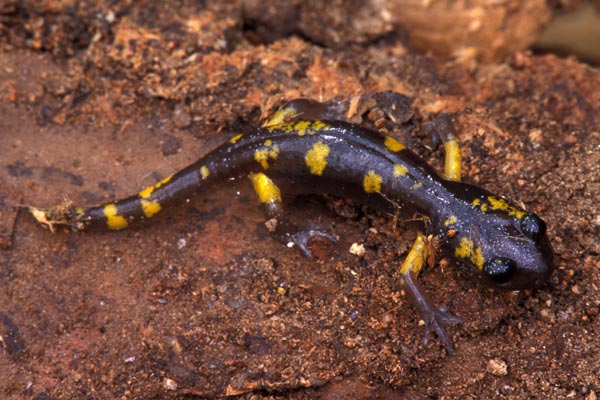
This youngster was concealed under a log, as so many salamanders are. Bits of rotten wood are sticking to its moist skin.
This individual was found in an area of Kern County where both E. e. croceator and E. e. platensis occur. It might be an intergrade of the two, or it might be a "pure" E. e. croceator. Based on the color, it is very likely not a "pure" E. e. platensis.
Ensatina eschscholtzii eschscholtzii
—
Monterey Ensatina
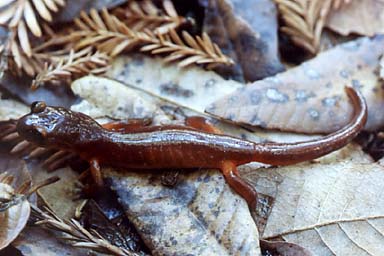
This is a nice big fat adult, maybe 6 or 7 inches total length. There were a variety of Monterey ensatinas under logs on Little Sur Trail that day, ranging from little tiny ones to this great big hulking fellow.
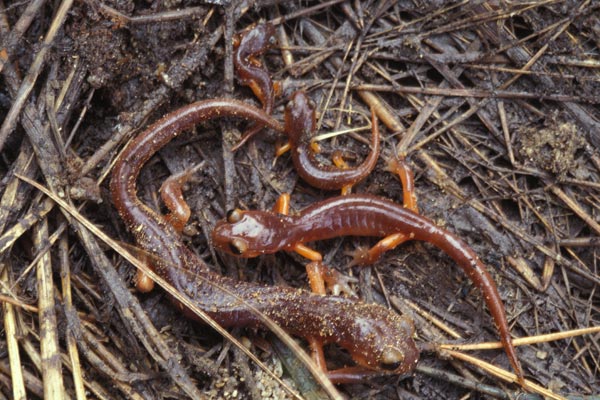
These four salamanders were under the same log. It's tempting to think of them as a little salamander nuclear family, but I really have no idea whether they're related or what genders they are.

This one's even fatter than the big fat adult up above -- pregnant, maybe? One tell-tale way to recognize an Ensatina is by the constriction at the base of the tail, which you can see clearly in this picture.
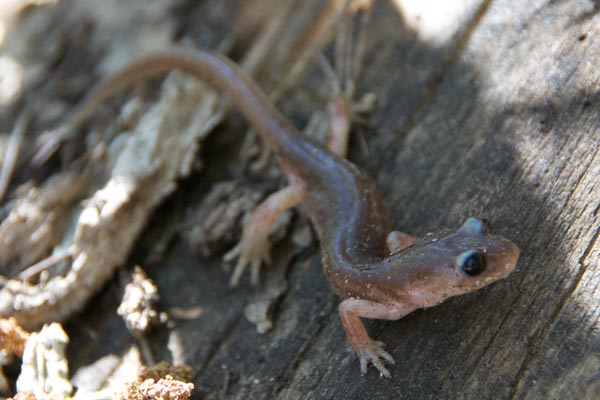
There is nothing particularly interesting about this salamander, except that it was the only salamander I saw on a six-week spring trip through parts of California, Arizona, New Mexico, Colorado, and Utah. Also, it is perhaps the ugliest Monterey Ensatina in the history of the world. Thanks to Joshua Puhn for correcting my identification here; I had originally listed this as an Arboreal Salamander due to its coloration.
Ensatina eschscholtzii klauberi
—
Large-blotched Ensatina

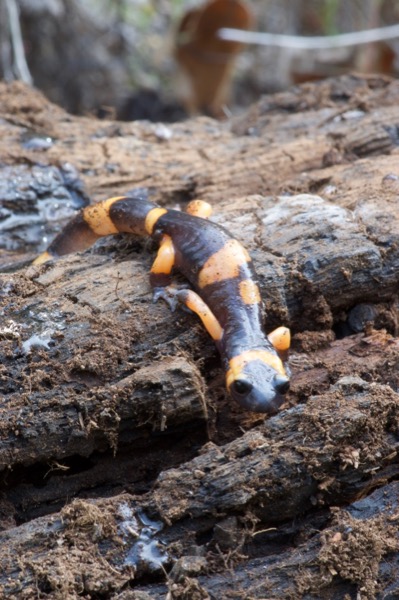
I had seen all of the Ensatina eschscholtzii subspecies except E. e. klauberi when it occurred to me that an upcoming desert trip I had planned would take me close-ish to their range. If I had planned a trip specifically to find this salamander, I would have scheduled it for a more salamander-appropriate time of year, perhaps March or early April. But Southern California got more rain than usual this winter, so I had some hopes that some moisture would remain near the surface, giving me a chance on my klauberi quest. And sure enough, I uncovered this one within about ten minutes of searching. (Then I searched for another hour or so without finding any others, but we don't need to mention that.)
This subspecies is classified by some authorities as a distinct species, E. klauberi.
Ensatina eschscholtzii oregonensis
—
Oregon Ensatina
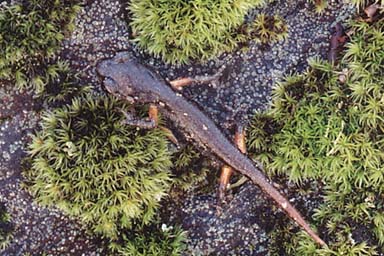
This little tyke is very young, which accounts for its proportionally oversized head. There are seven subspecies of Ensatina eschscholtzii, and their ranges form a large ring around California's Central Valley. In a few places there are wide intergrade zones between the subspecies, so this taxon isn't very clear-cut. However, Yorkville is clearly within the range of only this one subspecies, which is lucky for me, since the young are more difficult to tell apart than the adults.

Here are a possibly naughty pair of Ensatinas that were sharing the cover of the rotting log that they are pictured atop. The status of Ensatina subspecies has not cleared up over time. The taxonomy has gotten fuzzy enough that in the 2003 Stebbins field guide, the Oregon Ensatina has been demoted from a subspecies to a mere morphototype. "Morphotype" is loosely defined as an assemblage of individuals that have similar characteristics but whose genetic/evolutionary history is so uncertain that the term "subspecies" is too good for them. If there were salamander therapists, these poor guys would need them. I've continued to list them as a subspecies since my site follows the taxonomy given by the SSAR names book.
Stebbins goes so far as to claim that the large range in California of salamanders formerly known as Oregon Ensatinas is actually inhabited entirely by intergrades, and that the pure Oregon Ensatinas are only in Oregon and points north. But then, how "pure" can a morphotype be? Somebody needs to get out there and do some really serious state-of-the-art salamander studies on these guys. Maybe you?
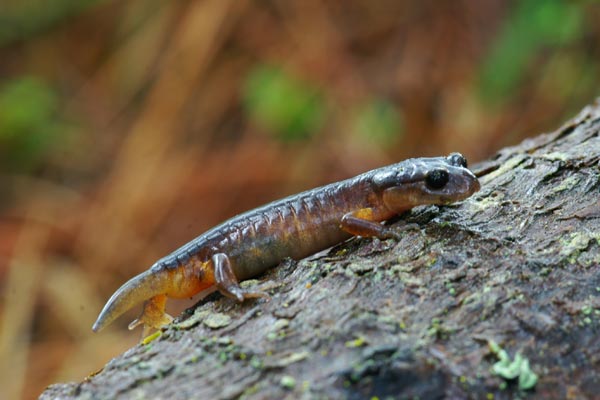
Like many lizards, many salamanders can regenerate a broken tail. (Some salamanders can even regenerate a limb.) The second-generation tail on this Ensatina is currently only a small fraction of its eventual size.
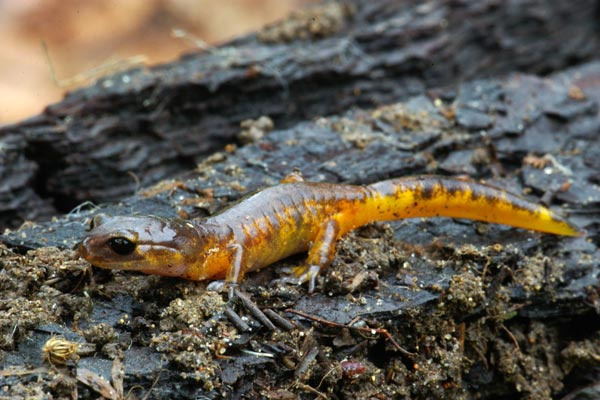
Here's a strikingly mottled Ensatina, the most beautiful individual I saw out of a couple dozen or so in a week spent in Mendocino county. This one looks more like a prototypical Painted Ensatina than a prototypical Oregon Ensatina, but it's considerably south of the small range of Painted Ensatinas.
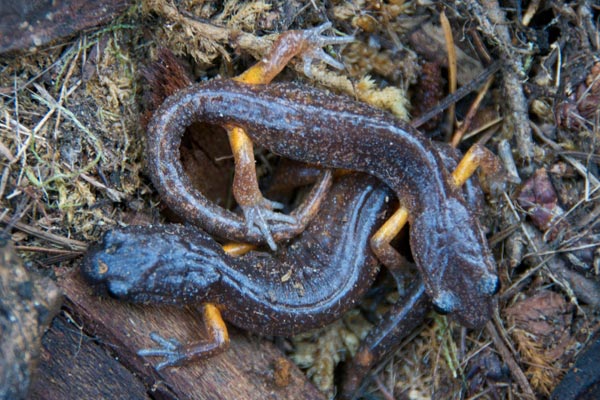
These two adult ensatinas were huddled together under a hunk of bark on a 45-degree day. Whether for love or for warmth, I cannot say.
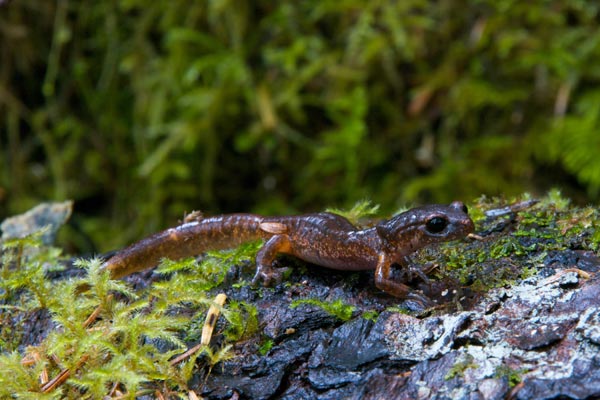
This beautiful state park is far enough north to be outside of the large area of intergrade among various Ensatina subspecies. So this is a "pure" Oregon Ensatina, for what that's worth. Stebbins isn't impressed.
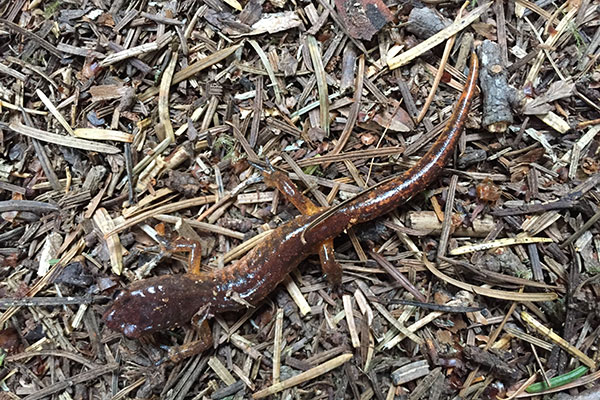
I expected to see a goodly number of salamanders in two weeks or so of camping and hiking along the Oregon coast, but it turned out to be an unusually hot and dry year, and the salamander pickings were slim. Other than a couple of Rough-skinned Newts, this skinny Ensatina was the only salamander I laid eyes on.
Ensatina eschscholtzii picta
—
Painted Ensatina
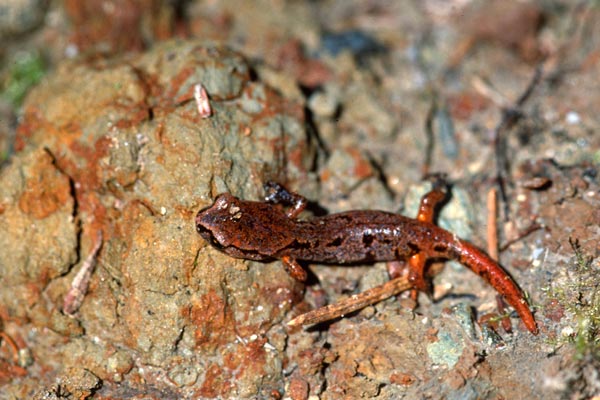
The adults of this subspecies are perhaps the most attractive of the Ensatinas. This youngster was under a piece of bark. Though this part of California receives gobs of rain annually, I was there in the dry season. I was lucky to still see several types of amphibians that day, including a Rough-skinned Newt, a few Coastal Giant Salamander larvae, a couple of California Slender Salamanders, a few small Sierran Treefrogs, several Northern Red-legged Frogs, and a fantastic swarm of tiny Western Toads.
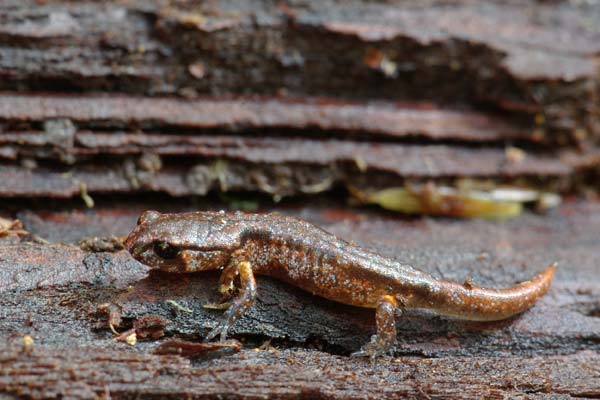
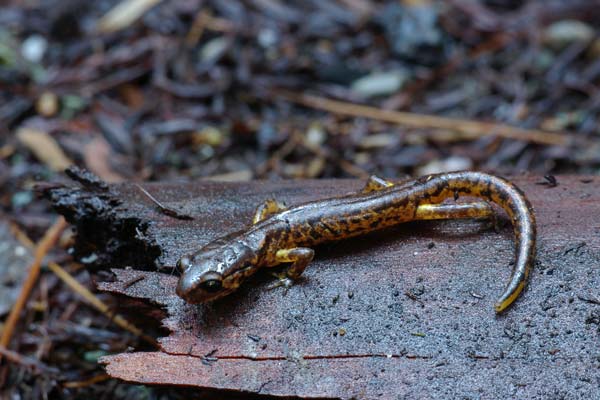
It took me five years to return to the range of the Painted Ensatina. Happily, the return trip did not disappoint, and after a slow start I ended up seeing a couple dozen of these strikingly-marked salamanders. These are the first two I uncovered. The top picture is another tiny baby, about the size of the one I saw in 2001. The second picture is a juvenile, quite a bit larger but not yet full sized.
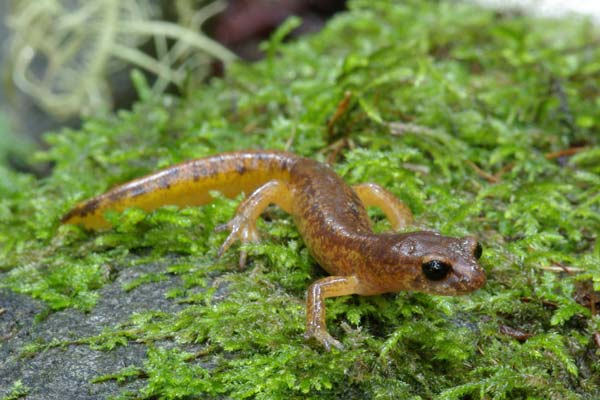
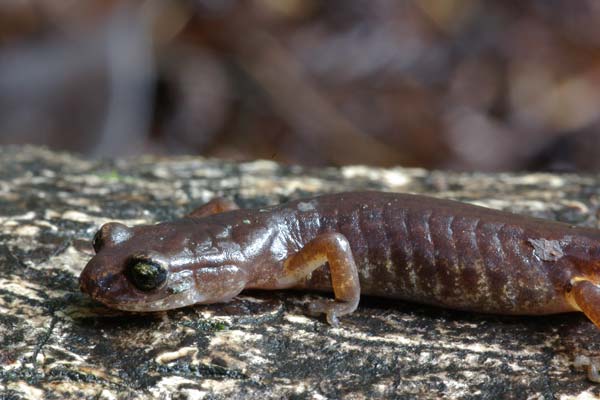
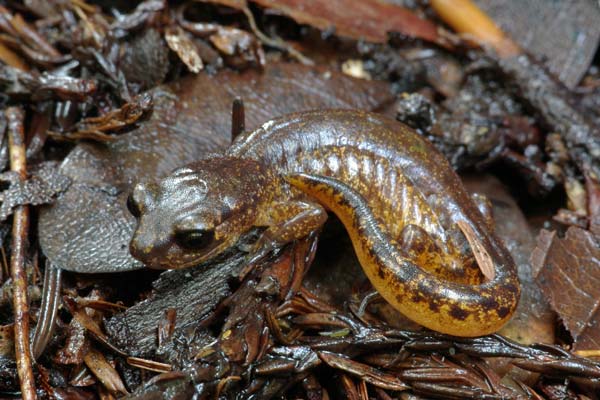
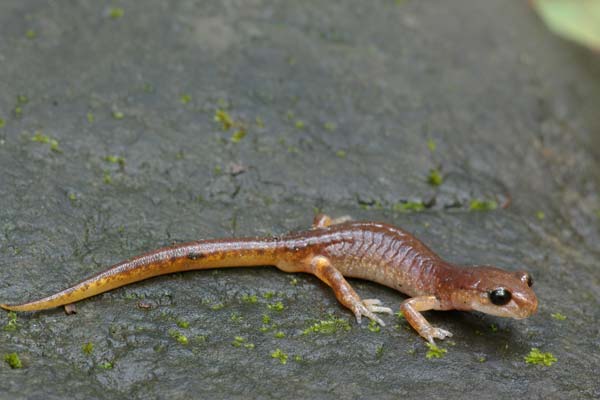

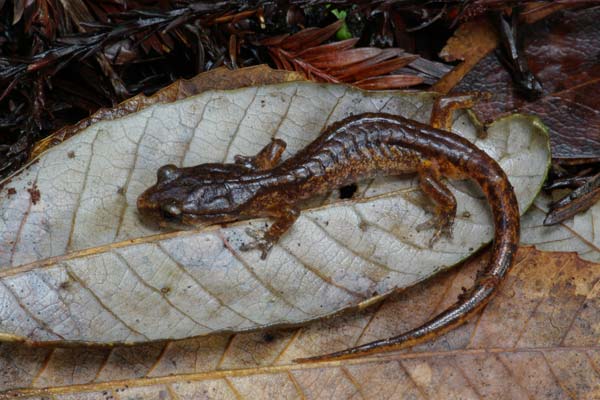
Jedediah Smith Redwoods State Park was teeming with Painted Ensatinas when we visited at the end of a very wet March. The pictures above show some of the variety of color and pattern of the adult Painted Ensatinas discovered in one afternoon.
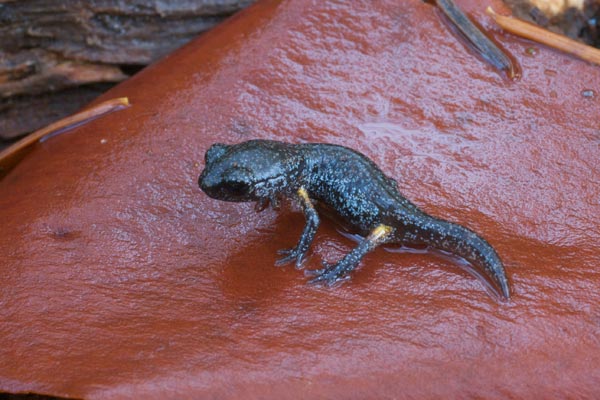
This was probably the smallest ensatina I've ever seen, certainly shorter than an inch in total length.
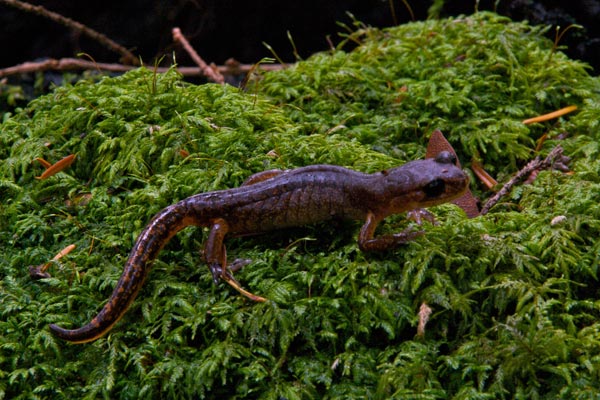
The "pure" Painted Ensatinas have a small range on the northwestern tip of California and the southwestern tip of Oregon. Surrounding that range is a very large intergrade area. Alfred A. Loeb State Park is in the heart of this pure range, so this salamander, which appears to be doing not much at all, is actually gloating.
Ensatina eschscholtzii platensis
—
Sierra Nevada Ensatina
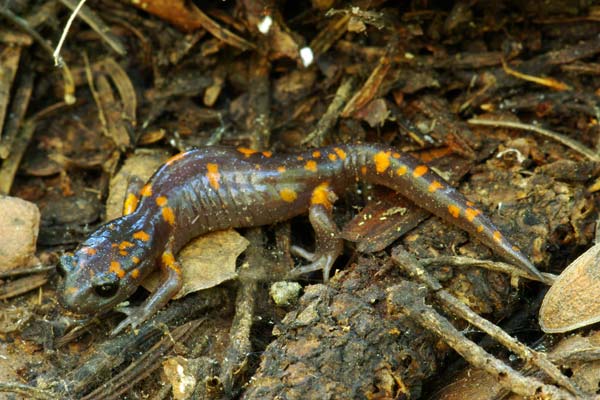
I was hoping to find some snakes in the Sierra on this summer day. Snakewise I was fairly unlucky, running across only a single Gopher Snake, but I was very happy to find my first Sierra Nevada Ensatina under a small hunk of bark. This is a young salamander, about half of its adult length.

This was my second Sierra Nevada Ensatina, discovered one day after seeing my first. This one is a full grown adult, perhaps five inches long. It was spending the daylight hours napping under a log, as salamanders are so wont to do.
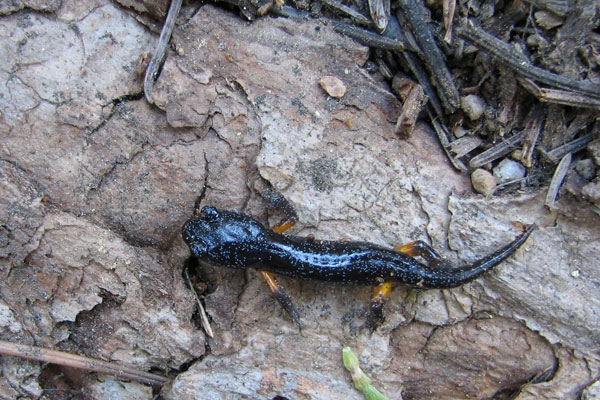
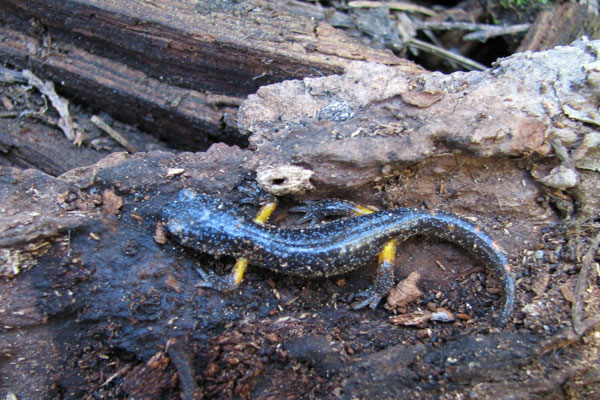
At this young age, the various Ensatina eschscholtzii subspecies all tend to look alike. The biggest clue that these two little guys are E. e. platensis (other than location of course) is the presence of large but faint orange spots on the tail of the second salamander pictured here.
Ensatina eschscholtzii xanthoptica
—
Yellow-eyed Ensatina
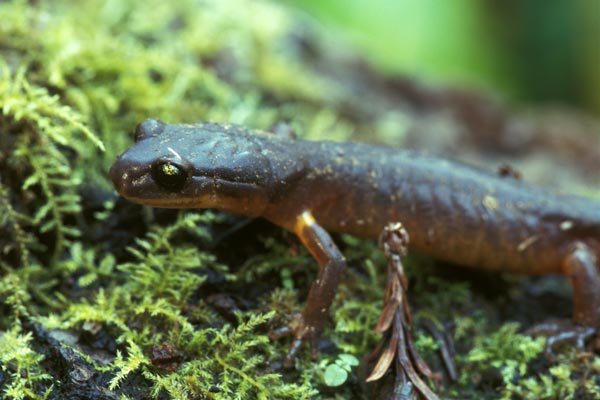
The yellow-eyed subspecies has a comparatively restricted range that overlaps with adjacent subspecies eschscholtzii and oregonensis, but it is easily distinguished by the yellow spots on the eyes. You can see the yellow spots clearly in this photo -- those aren't reflected highlights.
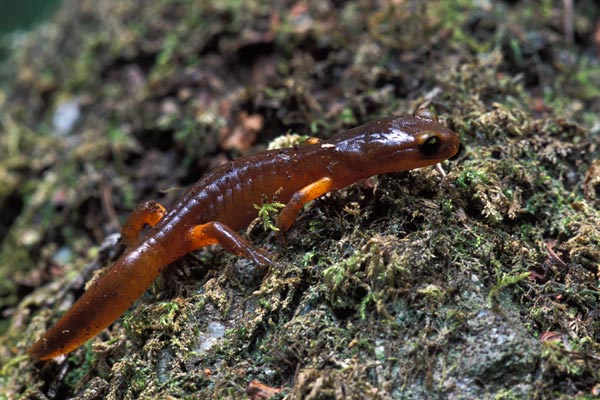
Mid-July is not a good season for salamander hunting, but I managed to come across one medium-sized individual in a couple hours of searching.
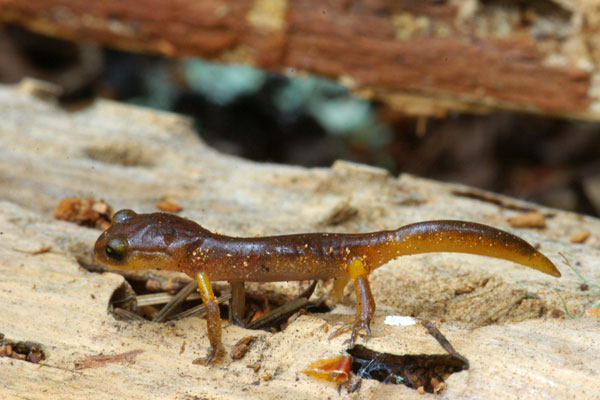
This youngster is in the classic Ensatina defensive pose: head down, tail up and curled, body high. I call it the classic Ensatina defensive pose because it is commonly mentioned in the salamander literature. However, I've seen hundreds of Ensatinas and this is the first one I've ever seen in the classic defensive pose. Maybe the young Ensatinas are getting one of them liberal educations and not learning the classics these days.
Online references:
- Ensatina eschscholtzii croceater account on CaliforniaHerps.com
- Ensatina eschscholtzii eschscholtzii account on CaliforniaHerps.com
- Ensatina eschscholtzii klauberi account on CaliforniaHerps.com
- Ensatina eschscholtzii oregonensis account on CaliforniaHerps.com
- Ensatina eschscholtzii picta account on CaliforniaHerps.com
- Ensatina eschscholtzii platensis account on CaliforniaHerps.com
- Ensatina eschscholtzii xanthoptica account on CaliforniaHerps.com
- More on the evolution of Ensatina eschscholtzii
Printed references:
- Basey, H. E. 1976. Discovering Sierra Reptiles and Amphibians
- Behler, J. L., King, F. W. 1979. The Audubon Society Field Guide to North American Reptiles & Amphibians
- Crother, B. I. (ed.) 2017. Scientific and Standard English Names of Amphibians and Reptiles of North America North of Mexico, with Comments Regarding Confidence in Our Understanding, Eighth Edition
- Henson, P., Usner, D. J. 1993. The Natural History of Big Sur
- Petranka, J. W. 1998. Salamanders of the United States and Canada
- Schoenherr, A. A. 1992. A Natural History of California
- Shedd, J. D. 2005. Amphibians and Reptiles of Bidwell Park
- Stebbins, R. C. 2003. Peterson Field Guide to Western Reptiles and Amphibians, Third Edition